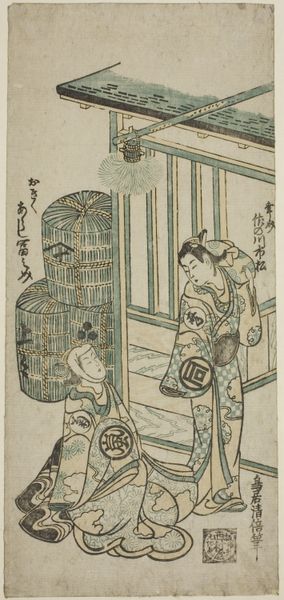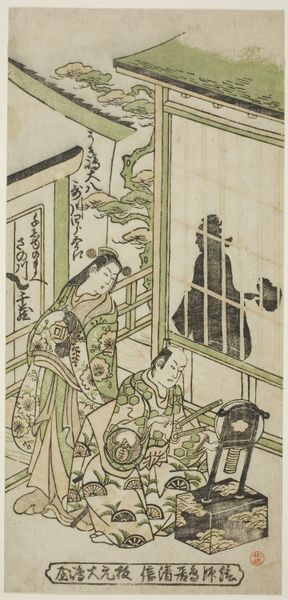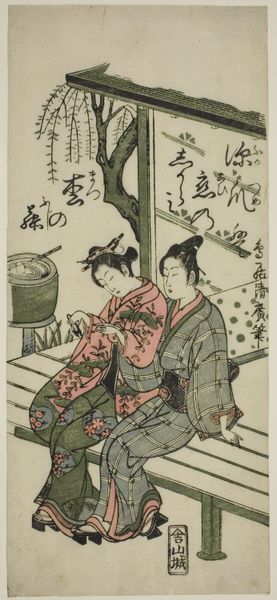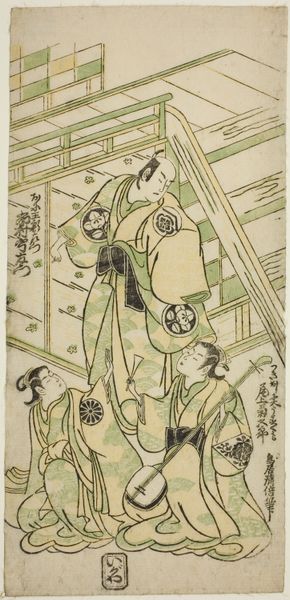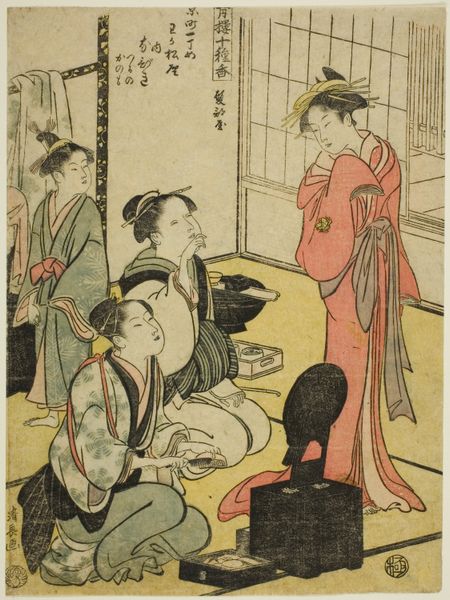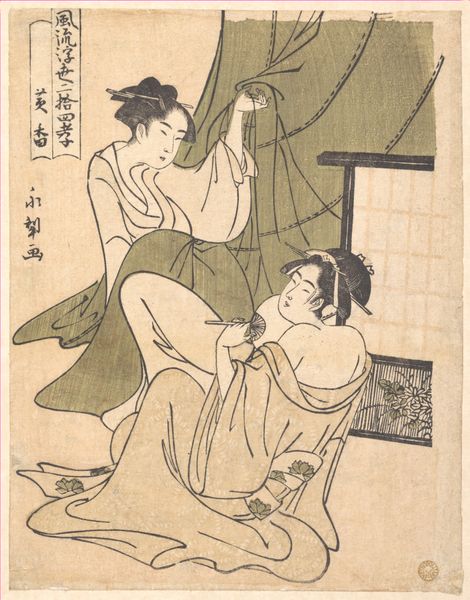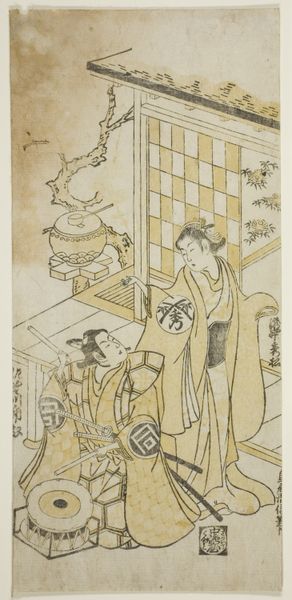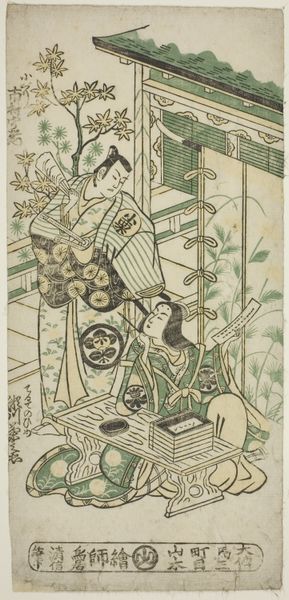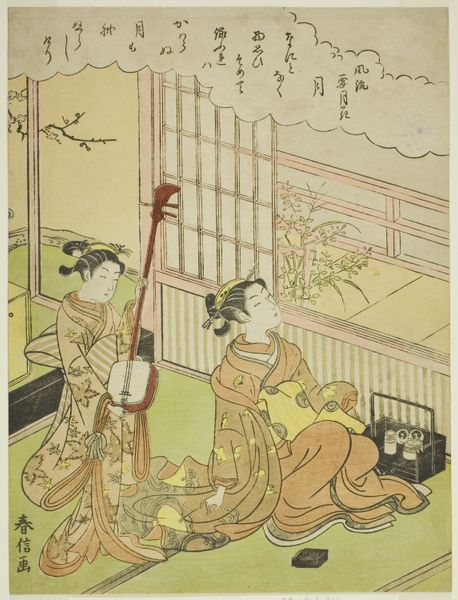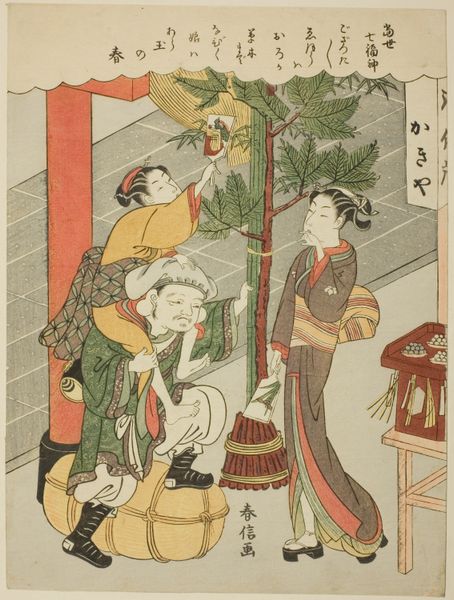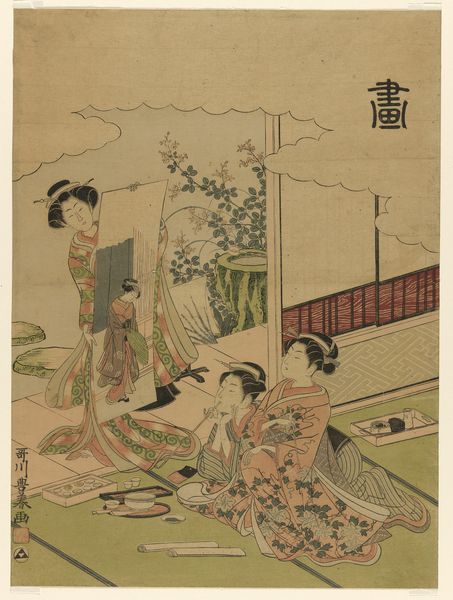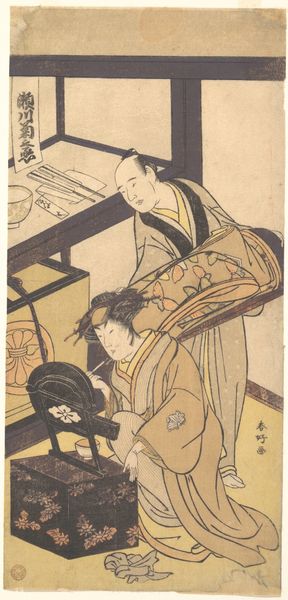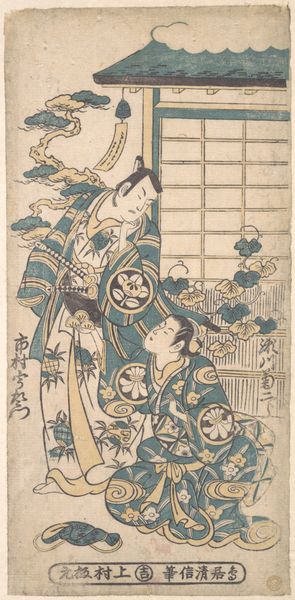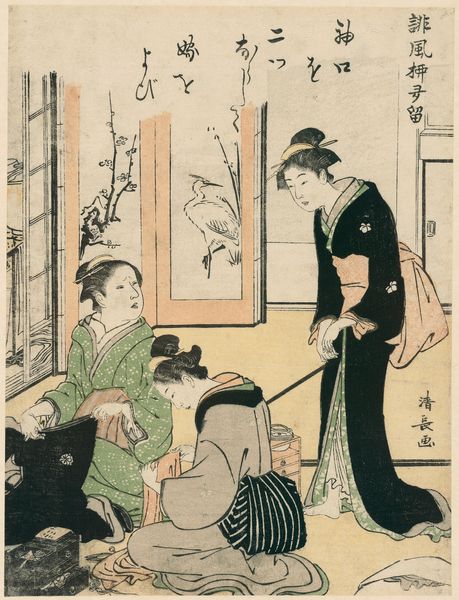
The Actors Ichimura Kamezo I as Urashima Taro and Takinaka Hidematsu I as Kanemoto Gozen in the play "Ichi no Tomi Seiwa Nendaiki," performed at the Ichimura Theater in the fifth month, 1746 1746
0:00
0:00
drawing, print, ink, woodblock-print
#
drawing
#
narrative-art
# print
#
asian-art
#
ukiyo-e
#
figuration
#
ink
#
woodblock-print
Dimensions: 31.5 × 14.9 cm (12 3/8 × 5 7/8 in.)
Copyright: Public Domain
This woodblock print by Torii Kiyonobu II, made in 1746, depicts actors in a scene from the play "Ichi no Tomi Seiwa Nendaiki" performed at the Ichimura Theater in Edo-period Japan. Prints like these, known as ukiyo-e, served as publicity for the Kabuki theatre, a vibrant hub of popular culture. Kabuki allowed for cross-dressing which openly challenged social norms of the time. The Ichimura Theater, as one of the main theatres in Edo, became a site for challenging the strict social structure of the period. Looking closer, we see the actors in character, wearing elaborate costumes. The setting, though minimal, suggests a specific location within the play. To truly understand this image, we can look to playbills and theatrical records. These sources can provide context about the actors, the play, and the cultural significance of Kabuki in Edo society. Art is never truly autonomous and the conditions of its production always matter.
Comments
No comments
Be the first to comment and join the conversation on the ultimate creative platform.
